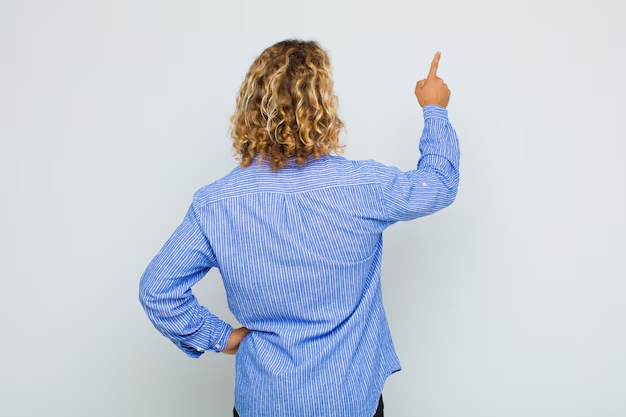Does Scoliosis Lead to Upper Back Pain? Unraveling the Connection
The mysterious world of back pain is one that many are familiar with, and scoliosis—known for its distinctive curve in the spine—can add an extra layer of complexity to understanding this discomfort. If you've ever pondered whether scoliosis could be the culprit behind your upper back pain, you're not alone. Let's explore this intricate relationship.
Understanding Scoliosis
Scoliosis refers to a condition where there is a sideways curvature of the spine, often resembling an "S" or "C" shape. Although it's commonly diagnosed during adolescence, scoliosis can affect individuals of all ages.
Types of Scoliosis
- Idiopathic Scoliosis: The most prevalent form, especially in adolescents. While its exact cause is unknown, it is not linked to underlying systemic conditions.
- Congenital Scoliosis: Results from spinal defects present at birth.
- Neuromuscular Scoliosis: Associated with neurological conditions like cerebral palsy or muscular dystrophy.
- Degenerative Scoliosis: Usually found in older adults due to wear and tear of the spine.
Each type presents distinct characteristics that can influence pain levels and areas of discomfort.
Can Scoliosis Cause Pain in the Upper Back?
The simple answer is yes, but let's dive deeper into how and why scoliosis might lead to upper back pain.
Anatomy Meets Curvature
The spine is structured to absorb stress and support movement effortlessly. Scoliosis disrupts this balance, leading to uneven distribution of weight and pressure across the vertebrae. When scoliosis affects the thoracic spine—the portion of the spine connected to the rib cage—it can result in:
- Misalignment: Leading to muscle fatigue as they work harder to support the spine.
- Nerve Pressure: The curvature can compress or irritate nerve roots.
- Joint Strain: Facet joints may experience increased pressure, contributing to inflammation and discomfort.
These factors collectively contribute to pain in the upper back, making scoliosis a potential cause of this specific discomfort.
How Severe is the Pain?
Pain severity can vary based on:
- Degree of the Curve: A more pronounced curve often correlates with greater discomfort.
- Location of the Curve: Curves in the upper (thoracic) segment are more likely to cause upper back pain.
- Physical Activity: Activities that exaggerate the spine's curvature may increase pain.
It's crucial to remember that while scoliosis can lead to upper back pain, the experience is highly personal. Factors such as age, physical condition, and overall health play significant roles.
Exploring Symptoms Associated with Scoliosis
Identifying scoliosis-related pain can sometimes be a challenge due to its resemblance to other back pain causes. However, certain symptoms can be indicative:
- Uneven Shoulders: One shoulder might sit higher than the other.
- Asymmetrical Waist: Unequal waistline or one hip higher.
- Visible Curve: Unusual alignment of the spine when viewed from behind.
- Localized Pain: Discomfort or pain around the curved area, potentially extending to the upper back.
- Fatigue: Tiredness from muscle strain.
Managing Upper Back Pain from Scoliosis
Given the potential discomfort scoliosis can bring to those with upper back pain, understanding ways to manage it is invaluable.
Lifestyle and Home Remedies
- Exercise: Engage in low-impact activities such as swimming or walking to strengthen back muscles without additional strain.
- Stretching: Regular stretching can help improve flexibility and reduce tension.
- Posture: Maintaining good posture is key. Ergonomic chairs or standing desks might alleviate discomfort.
- Heat and Cold Therapy: Alternating between hot and cold packs can reduce muscle tension and inflammation.
Medical Approaches
While lifestyle adjustments can provide relief for many, some may require medical intervention:
- Physical Therapy: Customized exercises and stretches aimed at strengthening muscles around the spine.
- Bracing: In adolescents, braces can sometimes prevent further curvature.
- Pain Relievers: Over-the-counter medications may offer temporary relief.
It's crucial to consult healthcare professionals to tailor solutions that best fit your needs.
When to Seek Professional Help?
Pain is a signal from the body that should not be ignored. Consider seeking medical advice if:
- Pain intensifies or persists.
- Mobility is significantly affected.
- Symptoms such as numbness, tingling, or weakness emerge.
Early evaluation by a healthcare professional can provide clarity and direction, ensuring spinal health is appropriately managed.
Living with Scoliosis: Tips for Daily Life
Living with scoliosis requires mindfulness and adaptability. Here are practical tips for managing everyday tasks:
- Use Supportive Bedding: A good mattress can provide both comfort and support.
- Ergonomic Workspace: Set up your desk and chair to encourage good posture.
- Weight Management: Maintaining a healthy weight can minimize stress on the spine.
- Stay Active: Regular, gentle exercise keeps the body strong and flexible.
Encouraging self-care and awareness can transform scoliosis from a daily hindrance to a manageable component of life.
In the vast domain of back health, understanding scoliosis and its potential connection to upper back pain empowers individuals to take proactive steps. While scoliosis can indeed lead to upper back pain, personalized approaches and early intervention can markedly enhance quality of life.
Key Takeaways on Managing Scoliosis and Upper Back Pain
- 🧠 Understand the Type: The nature of your scoliosis influences pain and management strategies.
- 🏋️♂️ Stay Active: Exercise is fundamental, focusing on strengthening and flexibility.
- 🛌 Mind Your Posture: Invest in ergonomic solutions for daily comfort.
- 🧊 Relief Techniques: Utilize heat/cold therapy and consider professional guidance.
- 📞 Seek Help As Needed: Persistent pain warrants medical consultation to prevent further complications.
By embracing knowledge and practical solutions, living comfortably with scoliosis can become a realistic, achievable goal. 🏆
